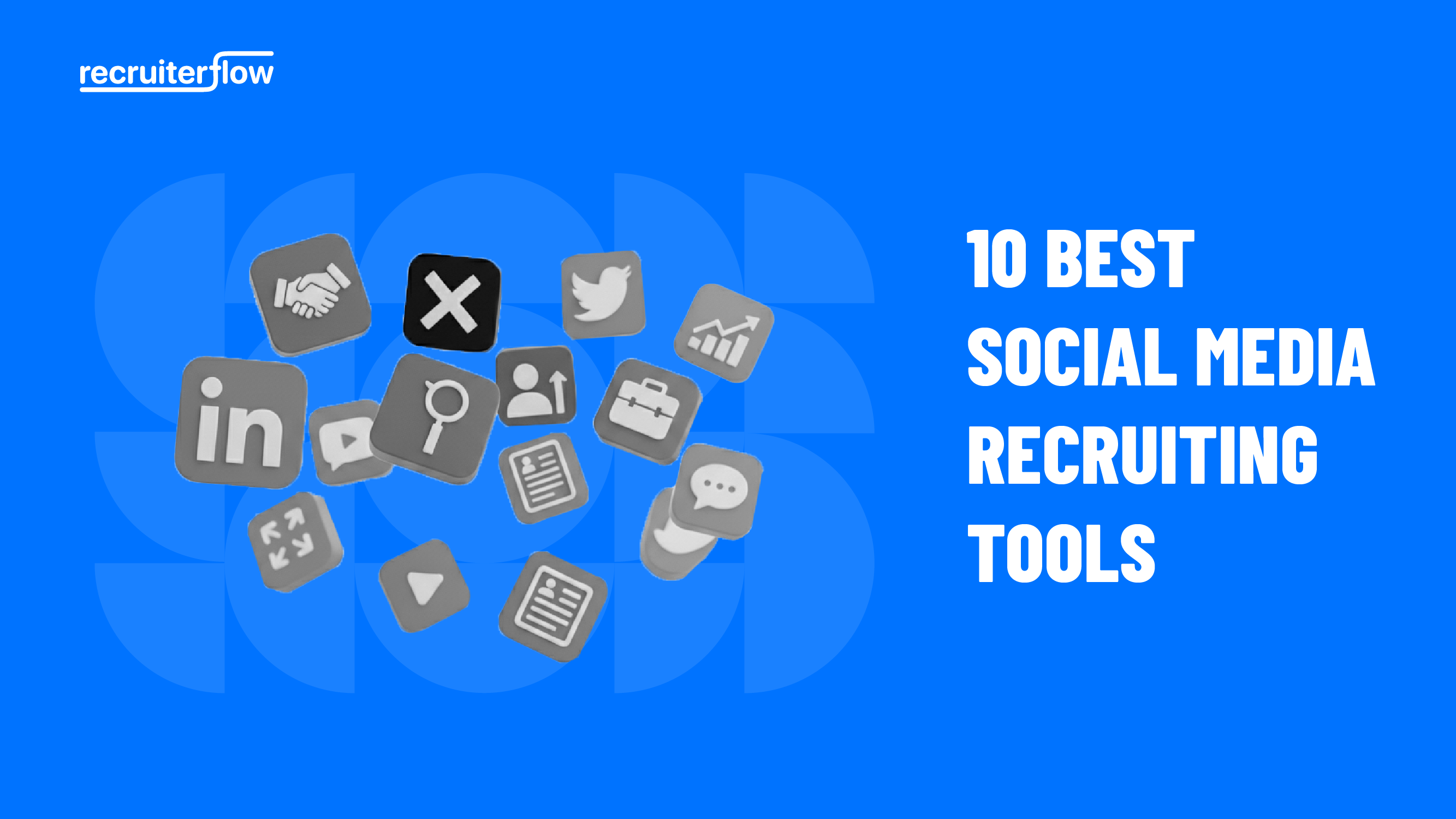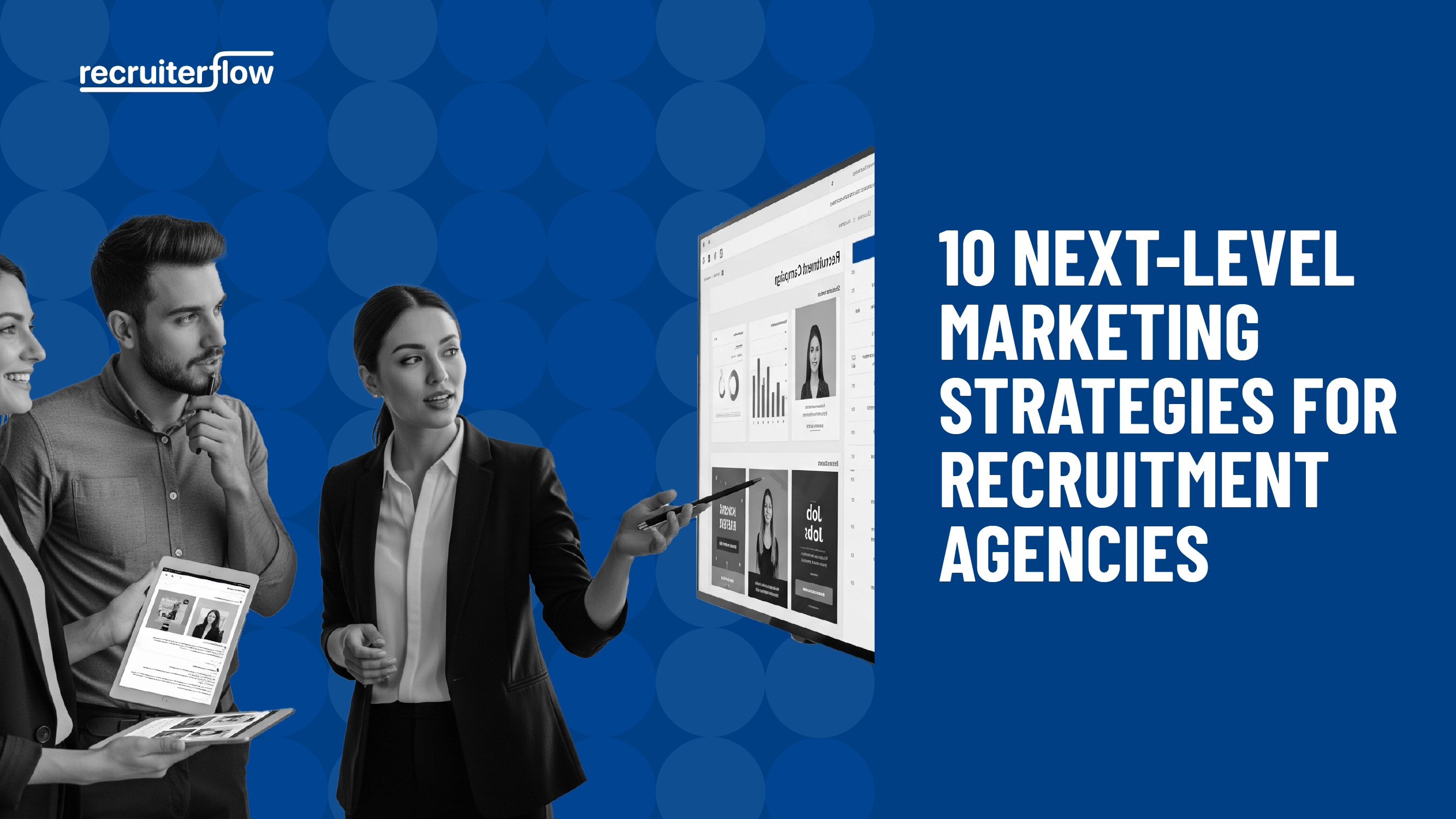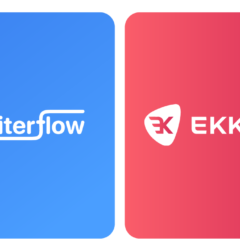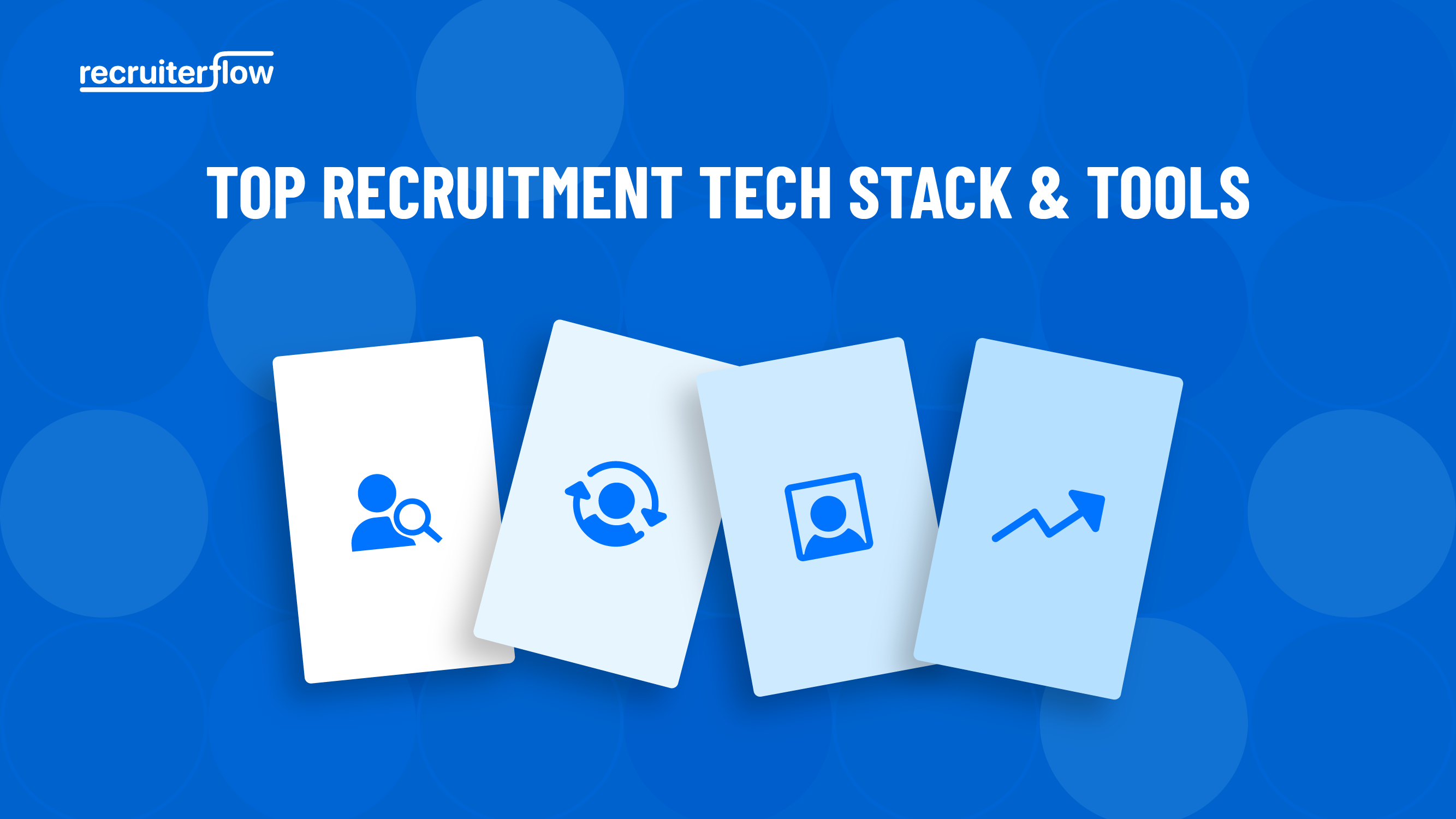
10 Next-Level Marketing Strategies for Recruitment Agencies

Anyone running a recruitment or staffing agency knows what you’re really selling is outcomes: fewer hiring headaches for clients and better jobs for candidates.
But markets are unforgiving these days. In July 2025, the KPMG/REC Report on Jobs in the UK flagged the fastest drop in permanent placements in 22 months. It also indicated weaker growth in starting pay amounts.
To combat rising uncertainties about unstable markets, there has been a rise in Google search trends for queries like “marketing strategies for recruitment agencies” and “proven marketing strategies for recruitment agencies”. Recruitment agencies have realized that they need a dedicated marketing pipeline that consistently creates qualified, inbound leads.
In this blog, we’ll explore ten practical and repeatable tactics to improve marketing for recruitment agencies. This blog will also define how Recruiterflow fills in gaps to remove operational friction and help implement the following marketing strategies for recruitment agencies.
What is Recruitment Marketing?
Recruitment marketing is the strategic use of deploying marketing strategies to attract, engage, and convert potential candidates throughout the recruitment funnel. It helps recruiters attract the top talent. Recruitment marketing helps in establishing a brand identity and building trust.
At its core, the idea of recruitment marketing is to apply all the principles of marketing to the recruitment process right from sourcing and screening to nurturing candidates.
Effective marketing strategies for recruitment agencies
Here are some of the top tried and tested recruitment marketing strategies you must consider:
Sharpen your positioning and ICP
Recruitment marketing starts when agencies precisely understand their own business positions — who they serve, what they solve, how they deliver, and why they’re different.
Your ICP (ideal client profile) is at the nexus of these segments. It is the kind of account an agency can win repeatedly and profitably.
For example, if you’re defining ICPs in the UK, layer in parameters that impact hiring success. IR35/off-payroll obligations for contractor-heavy programmes affect engagement models, margins, and risk-sharing. There are also sector nuances across regions to consider.
Turn websites into conversion machines
Turn the website from a brochure to a pipeline asset. It can segment visitors (client vs. candidate), prove the efficacy of your service, and trigger qualified conversations. All of this is key to running effective marketing strategies for recruitment agencies.
A few quick tips on how to build high converting website funnel:
- When visitors show up, give them one of two choices: “I need to hire” or “I’m looking for a role.” Each option leads them to a homepage experience with tailored proof, FAQs, and CTAs.
- Create one page for each industry/role and one per service line (retained, contained, embedded, project hiring).
- Write benefit-first content. For example, “Senior revenue hires in 45 days, not 145.”
- Keep client forms to 5–7 fields max: name, email, company, role(s), urgency, budget range, etc.
- For candidate applications, collect essentials first and use progressive profiling later.
- Pair forms with live chat and a “Book a consult” button that opens a scheduler modal.
- Use numbers-forward case studies.
- Define conversions by the leads created, meetings booked, briefs qualified, and final placements.
- Direct web events and UTMs into your CRM/ATS so marketing can prove revenue, not just clicks.
- When publishing vacancies, ensure that adverts avoid discriminatory wording and comply with Equality Act 2010.
- Build location pages (”Recruitment agency in London”) with local client logos and testimonials. Add a Google Business Profile with the right categories, UK dial codes, and office hours.
Also check read How to Create a Recruitment Marketing Plan for Your Staffing Agency?
Build an inbound engine with content that compounds
Great inbound is a system that addresses real hiring pain points with search-friendly assets, lead magnets, and sales enablers.
Here’s how to build that engine:
- Interview 6–10 ideal clients and 10–20 candidates. Ask them what delays their hiring, what they search for in those moments, and what they wish they had on hand.
- Turn their answers into topics, and then layer in keyword research.
- Pick 2–3 pillars tied to your core offers and ICP. Each pillar gets 8–12 cluster pieces that answer adjacent questions and link back to the pillar.
- Build decision-stage assets. This can include:
– service comparisons (retained vs. contained vs. embedded)
– process transparency (what happens in the first 21 days)
– ROI tools (cost-of-vacancy calculator, interview time calculator). - Create repeatable flagship assets. Push out one well-crafted salary report, a “State of Hiring” brief, or a diversity benchmark.
- Build and update every page for search intent. Use a well-defined heading structure that mirrors common questions. Put in short intros. Use screenshots or diagrams.
- Develop CTAs to match user stage and intent. For example,
– educational CTAs can be “Get the scorecard,” “See the checklist,”.
-high-intent CTAs can look like “Request a sample shortlist,” or “See our 21-day plan.” -bottom-funnel CTAs would be “Book a consult,” “Start a pilot search.”
Founder-led LinkedIn and expert POV, daily
A large part of an agency’s identity is built on how its leaders think. Showcasing founders’ and leaders’ opinions makes prospects feel like they already know how you work. Partner-led posts deliver faster authority, warmer inbound, and higher close rates.
- Figure out a daily system that compounds. For eg:
– 10 minutes to post in which you ship one focused idea. Add one concrete metric or screenshot. End with an actionable next step.
– 10 minutes to comment on 10 ICP posts. Add a quick framework, a data point, or a clarifying question.
– 10 minutes to follow up. DM 3–5 people who engage meaningfully. Offer a resource, invite them to an event, or ask a targeted question. No generic pitches. - Use content to consistently earn qualified attention. This could be a mini case study, a market signal snapshot, a scorecard or checklist, and so on.
- Push a weekly newsletter with one market signal, one how-to guide, one case-study snippet, a template or checklist download. Lead everything back to a landing page, and build an owned list you can nurture later.
Nurture with Segmented Email + Automation
Don’t use the email outreach strategy of “spray-and-pray”. It adds to the noise in busy inboxes, and makes recipients click ‘Spam’ straight away.
You must make every follow-up email feel like it was written for that specific person. Don’t get caught up in the number of emails; focus on sending the right message to the right person at the right time.
Segment recipients by:
- Persona: hiring manager vs. HR vs. founder.
- Stage: brand-new lead, active prospect, dormant, placed client.
- Signals: visited pricing page, downloaded salary guide, clicked a specific role, attended a webinar.
Then, design drip tracks for each segment:
- New leads: 3–4 emails on “How we deliver in your niche” with quick case snippets.
- Dormant accounts: a 10-minute market diagnostic offer.
- Possible candidates: skill demand graphs, curated openings, trends to watch.
Recruiterflow enabled Guy Last Recruitment to achieve this by building disciplined automations tied to real behavioural signals. The exercise led to a 142% increase in job orders. Every message felt personal, but was largely pre-configured.
Bear in mind that unsolicited B2C/B2S email and SMS, UK PECR requires consent. You also have to meet all conditions of the limited “soft opt-in.
Partner with industry influencers and niche communities
It’s not easy to gain the trust of potential clients and candidates, especially for new or specialized firms. Gain credibility by associating with established industry figures or candidate communities. This is key to more prospects listening, engaging, and converting.
A few tactical plays to accomplish this:
- Get founders and CEOs on relevant webinars and podcasts, hosted by thought leaders in your niche. When live, they should speak about value-driven insights to demonstrate expertise. No sales pitches.
- Collaborate with an influencer or specific community to publish researched reports or perspective pieces. Make it shareable as social snippets, and offer a gated PDF to get leads.
- Sponsor newsletters and events. Target community newsletters, Slack channels, or virtual meetups. Offer a “hiring barrier diagnostic” or a short hiring playbook.
Pro-Tip: Look at Recruiting Brainfood (Hung Lee’s weekly newsletter & community) for marketing strategies for recruitment agencies in the UK. Don’t forget The Recruitment Network (TRN), UK Recruiter, and TEAM Network.
Turn Recruiters into Micro-Influencers
Potential clients and candidates are more likely to engage with a recruiter they feel like they already know. Faceless brands don’t have the same appeal.
Take a few steps to position your individual recruiters as credible voices in the market. This amplifies an agency’s reach and authority—without too much spike in ad spend.
A few steps to achieve this:
- Run monthly content sprints, about 45 minutes each. During this time, each recruiter drafts 2–3 LinkedIn posts. Prioritize market insights, role highlights, or stories from the hiring process.
- Forget polished press releases. Stick to personality and authenticity.
- Help recruiters get started with the right prompts, such as “What’s one candidate success story that stands out for you?” or “What’s a surprising skill trend you’ve noticed this month?” This keeps content on point.
- Amplify the most engaging recruiter posts. Share them across the brand website, blogs, and newsletters. Boost visibility and reinforce the recruiter’s personal brand.
- Advice recruiters to talk about local salary datapoints, regional demand signals, or sector-specific UK news.
Account-Based Marketing (ABM) for high-ticket clients
High-ticket clients usually come when an agency is surgically relevant to a set of specific client requirements. Generic lead generation usually doesn’t yield these potentials.
Hence, consider using Account-Based Targeting across multiple contacts, over weeks, not days.
ABM focuses on deal quality, fee %, and retainer agreements, rather than pure volume.
- Build a Target Account List (TAL). Start with 50–200 companies per niche. For each, look at past wins and hiring intent (fresh job postings, leadership changes, funding, new locations).
- For each account, find the Decision Maker (TA/Head of Function), Champions (hiring managers), Blockers (finance/legal), and Influencers (founders/specific recruiters).
- Create progressive commitments in your communication. Start by offering a 30-minute consultation to pinpoint bottlenecks in prospects’ workflows. Move up to offering talent maps and then a pilot search.
- Use risk reversal tactics — milestone billing, clear SLAs — to reduce friction without discounting.
- For every touchpoint, ensure that personalization works across three layers: industry, company, and person. Smart tokens and dynamic snippets will help emails and DMs feel more handcrafted.
- Spin up custom landing pages. Keep them vertical-specific. Frame the problem, offer a 21-day plan, one or two relevant studies, and a single CTA. Include short forms and a scheduler modal after clicking “Submit”.
- Set up alerts to notify you of shifts that often precede hiring — funding, director changes, new locations, etc. Map that to private-company datasets like Beauhurst, and find funding rounds and growth signals before they are announced. Use this information to set up 1-to-few outreach efforts.
Use SEO + PPC + Programmatic
Use this combination to land more qualified briefs, meetings, and placements. Use controllable inputs from every channel to bolster the pipeline and iterate weekly.
SEO
- Pick 2–3 pillars tied to your offers (e.g., “Senior SRE Hiring,” “Enterprise AE Ramp,” “Embedded Talent Pods”).
- For each pillar, ship 8–12 cluster posts that answer adjacent questions.
- Internally link back to the pillar and relevant pages (service comparisons, case studies, “21-day plan”).
PPC
- Split campaigns by intent — high, mid, and brand/competitor.
- Deploy 1 campaign per objective. Run tight ad groups by theme.
- Use RSAs with 8–10 strong headlines.
- Add site links (case studies, 21-Day Plan, pricing philosophy), callouts, and structured snippets.
Programmatic
Use programmatic job ads for multi-role or high-volume hiring. It distributes jobs across aggregators/boards, dedicating budget to sources yielding quality applicants.
- Be mindful of feed hygiene. Craft standardized job titles and clear requirements.
- Define Qualified Apply (candidate meets must-haves) and Interview Scheduled as optimization goals.
- Eliminate sources with high application volume but low interview rate.
- Lead with unique selling points candidates care about — impact, tech stack, progression, comp transparency.
- Remember: quick replies win senior talent.
- Build country/region modifiers into campaigns (“recruitment marketing agency UK,” “marketing strategies for recruitment agencies UK,” + city + role).
- Match bidding windows to UK business hours to improve “meeting-booked” rates from form fillups.
Put your tech stack to work
Be precise in using your tech stack. Whether you’re using in-house tools or leveraging a white label SaaS platform to automate workflows, your systems must capture the right data at one go, route work to humans when needed, and establish new metrics to reflect changed behavior. Consider the following steps to establish technical protocols:
- Deploy fast, mobile-first pages with concise forms and embedded scheduling tools. Hidden fields should carry source/medium/campaign/keyword/content_id so every lead has provenance on day one.
- Create a single dashboard for all Companies, Contacts, Jobs/Briefs, Candidates, and Activities. Store marketing source data and track changes in stages as candidates advance through interview rounds.
- Institute analytics + tag manager to track events (form submit, meeting booked, file downloaded). Pass IDs/UTMs cleanly into the ATS.
- Set up a simple dashboard for spend ? lead ? meeting ? qualified brief ? placement.
- When scaling inbound in the UK, verify that the ATS and martech flows comply with UK GDPR/DPA 2018 principles and PECR for e-comms.
- Log consent/soft-opt-in status, and give easy opt-outs on every nurture.
How Recruiterflow can help implement marketing strategies for recruitment agencies
Hiring teams can operationalize all the aforementioned tactics with Recruiterflow. Individual teams will need to customize their flows, but here are a few ideas to get started:
- Create multi-step, condition-based email sequences for client and candidate leads.
- Configure “if/then” rules into the automation suite to auto-assign tasks, move between stages, send messages, and trigger hand-offs.
- UK teams can enable GDPR mode for opt-in, legitimate interest periods, anonymisation, and “right-to-be-forgotten” workflows.
- Configure “no-touch”/non-solicit rules for specific clients and candidates to reduce legal/commercial risks common in UK retained environments.
- Post job descriptions to 150+ job boards, including niche ones.
- Spin up out-of-the-box dashboards for recruiting KPIs.
- Use Revenue and Hired-by-Source views to analyze marketing spends.
- Get advanced reports when you need deeper insights (by region, sector, role). Share live dashboards or client-specific views.
- Run client portals to share shortlists, control visibility, and centralise feedback.
- Monitor target accounts, map buying committees, and log every user interaction (LinkedIn, email, events).
There’s a lot more, and we’d be happy to show you all of it if you sign up for a demo.
Recruitment






Abhishek Sharma